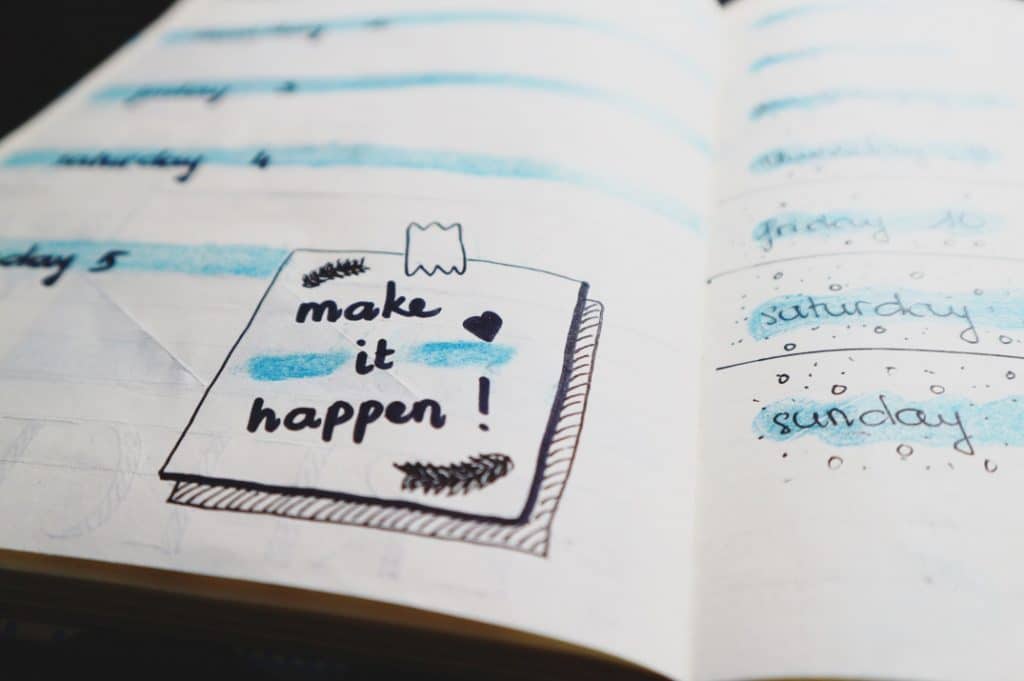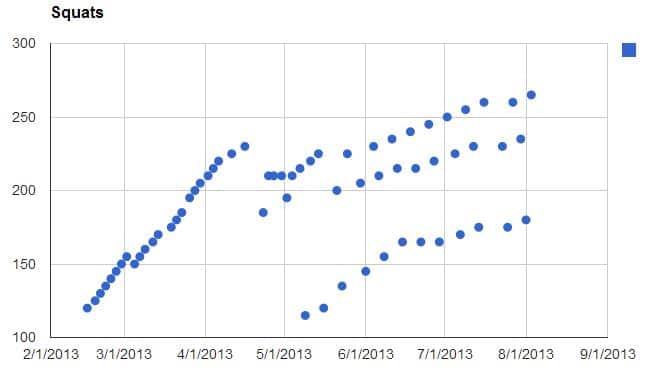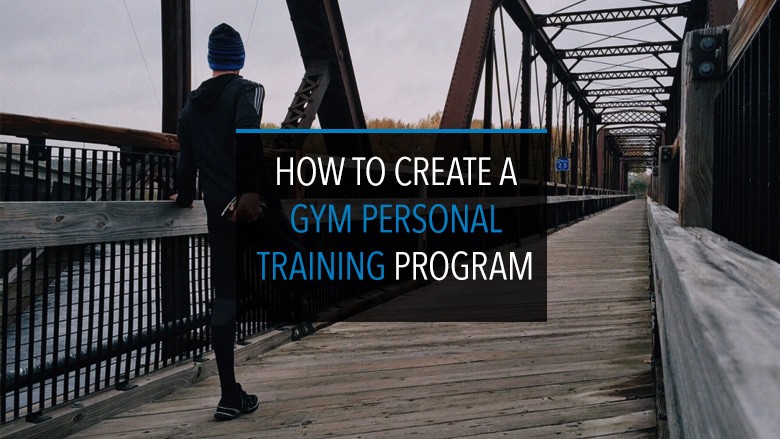Are you tired of expensive personal trainers and want to try something new? Do you want the freedom to manage your training session?
If your answer is yes, having a personal training program might be your only escape. If you can nail it in creating one, you have set a significant milestone as many trainees find the process technical.
Research has it that training programs help in chronic condition management, mood elevation, and keeping your physical fitness for a long time.
While a few people have tried to create training schedules, not all get the oomph to follow it to the latter. Without motivation, you will be hyped up the first few weeks only for boredom to start snooping around your door sooner than you think. Before you know it, you have thrown in the towel and your efforts will go in vain.
So how do you create an effective training program that stands out from the crowd, is need-based and is easily adaptable? You’ll get all the answers here. The article is a fully-fledged and compact guide on how you should go about the process. Flex your muscles to receive information that you will only get from the farthest corners of the internet.
Before we delve deep, let’s have a look at some of the questions that form a foundation when creating a compelling personal training program.
· What are your goals?
Some people hit the gym blindly. It’s not a surprise when they find themselves wading through the thick waters unsuccessfully.
The types of exercises you will be doing are just, but the tip of the iceberg and the real thing is out of sight. Get to know why you are attending the gym. Is it because you want to cut weight, build muscles, or you are preparing to take your first 5k by the horns?
Either way, well-written reasons will help a great deal when it comes to choosing the right exercises, your diet, the intensity of the workouts, and the time you’d like to devote to the training sessions.
· What are your Preferences?
You can’t be a jack of all trades when it comes to exercising. Even Rich Froning Jnr (The fittest person on earth according to menshealth) doesn’t put all in one basket. Everyone has a taste of the kinds of exercises they’d go for when they want to trim their tummy, add more inches to their arm or stiffen their lower backs.
Your preference must rhyme with your goal. For instance, lifting 170 pounds of weight while your goal is running the 5k Marathon doesn’t make sense.
· What is your experience?
The community of trainees is divided into three groups. We have the novice trainees who are starting. We have intermediate trainees that have already gotten the hang of the activity and experts who “train for a living.”
Your level determines the kinds of exercise you will do. A novice trainee shouldn’t start doing rigorous training with high intensity. For instance, doing squats four times a week is likely to do you more harm than good.
In a nutshell, don’t throw yourself into advanced exercises with sophisticated variations that only experts can handle. The rule of the game is creating a clear program with your ability and momentum-rate, but not your desire.
The Three Testaments of a Successful Training Program
You have already drafted down the differentiating factors; it’s time to sky-rocket. And to blast us off are three testaments of training schedules. According to studies, those that incorporate these vital factors have a 30% success rate more than those that don’t.
1. Training with Weights

Weight training insinuates that you after building muscles. Yes, this is true, but there is another side of the coin. Eveydayhealth researched weight training in depths and unearthed seven benefits that are known to a few. One of the benefits is keeping your weight in control for good.
Exercises like aerobics, 5k runs, or cycling, increase the number of calories you burn. You will shed the pounds and reduce the flubs, but you won’t maintain your weight for long. If you don’t check on your diet or miss the gym for a month, you go back to your previous state.
This won’t happen when you train with weights as it has an eye for metabolism. It keeps it going even after the training session is over. Plus, it increases your post-exercise oxygen consumption.
You can try this on your own with a friend. One of you can do strength training while keeping watch on their diet. The other one can do exercises like aerobics, running, or using gym equipment. After six months, come and compare notes. You’ll be surprised that the dieter has lost more weight than the die-hard exerciser.
2. Cardio Exercise
Every gym must have either one or two of the endless types of cardio machines. The equipment is useful at warming up.
They activate your body system, improve your recovery ability, and get your heart rate moving, which will sustain you for the remaining part of the training session.
3. Flexibility Exercises
Many shun flexibility training. They are the kind of those exercises that are recognized with pain. The general rule of the body is to resist any attempt to stretch. The result is excruciating pain.
Most personal trainers and gym instructors opt to separate this type of training from the regular workout routines. However, it’s advisable to keep it together with other exercise to get a full dosage.
Procedure to Follow when Drafting a Workout Plan
You are a few steps from achieving your fitness goals. If you get it right from the first round, you’ll enjoy every moment you have to train by yourself.
1) Determining your Fitness Level
We talked about knowing your experience level before you draft your program. A considerable lot doesn’t take into account their fitness level, hence major a stumbling stone. Without this knowledge, you will be doing the same tough workouts without proper direction.
Once you have determined your level, you can gauge how fit you are, what you need to go above, or the types of exercises you will maintain.
There are many ways you can do this. We’ve sampled a few that are less complicated that you can try out.
· Running for one Mile
The one-mile challenge is a DIY way of determining your fitness level. People have used it for decades, and it pays off.
Today, a mile is the same distance you will cover when you find yourself in the middle of heavy rain without an umbrella. Or when you remember that you have forgotten your phone at home and you’re just about to board a bus. Such scenarios are “emergencies,” and you won’t feel the heat of an actual one-mile challenge.
Recent research discovered that men over 50 years who can successfully run in 8 minutes have kept their cardiovascular fitness in check and are likely to live longer. On the other hand, women of the same age and can run the same distances in 9 minutes are better off. Plus, they are not susceptible to contracting heart diseases.
· The Maximum Aerobic Function Test
To someone with vast experience in fitness, the one-mile challenge may bring “false” results. They need something tangible that will make them sweat. The Maximum Aerobic Test is their go-to method.
Before Phil Maffetone invented this idea, he already knew that expert trainees needed a great barometer that could keep up with high-intensity aerobic fitness. It’s the need that the test tries to meet.
The test isn’t an uphill task. If you’re interested in getting wind of your aerobic intensity, you shouldn’t shy from following these steps.
- First, know your Maximum Aerobic heart rate. You can use the 180 formula to determine this.
- While still working on your heart rate, you can find your walking and running pace.
- With the results in step (ii), calculate the time it took to complete a specified distance.
- Make a note of your results which you will use as a reference-table in the future.
Below is an example of a final draft of MAF
Mile(s)FebruaryMarchAprilMay1 Mile18:3617:4917:0116:52 Miles20:0519:2418:4417:433 Miles22:5520:4419:3418:05
· The Treading – Water Method
The method is done in a water body. Whether you use your swimming pool at home, a slow-flowing river, or beach, ensure that the human-made or natural water body is safe.
Aim to tread the water for a minimum of 15 minutes. It’s the set record that reveals your resistance level.
You should not float once you reach the deep end. Plus, don’t swim and be in the constant but slow movement. Your head should be above the water. By the end of the session, you will be worn out, but the method is quick and very efficient.
2) Planning your Fitness Program

Saying it by word of mouth or planning it in your mind does not count if you want to get the most out of your training program. Going the extra mile to plan and design your program is needed. You can put down how you want your training to be and how you’ll arrive at every goal.
Ø Needs Analysis
When we were talking about the testaments of a good workout plan, we touched on the three areas of exercise that should not miss in any training program. Needs analysis acts as a fulcrum as it brings the three together. It dissects them to get the right kinds of exercise you comfortably resonate with while having heavy blows on the flubs.
Furthermore, you will come up with reps and sets and the intervals for each exercise. The component is affected by such stuff as your age, gender, health factors, and your fitness goals.
Ø The Training Guidelines
You need to have a book or tablet when making training guidelines. Remember, you already know what you need, so this step should be a walk in the park.
However, there is a need to get advice from a personal trainer or a gym instructor. They are experienced fitness experts, and they’ll help you avoid over-training or failing to achieve your goals since you limit the workouts.
A few of the things you can look at include the choice of exercise you will incorporate on your workouts. As a general rule of fitness, the activities should not target one part only. You should work on your upper body, the legs, the legs, biceps, triceps, etc.
Exercising with order is the second thing to keep in mind. It’s advisable to begin with the larger muscles before you go to the smaller ones. When commencing on the session, you have the strength and stamina. This slowly fades away as you do more exercises, and as rigorousness increases.
The third thing to fact-check is the number of sets and repetitions. It’s in bad faith to pounce onto anything that comes into your minds and doing it in uncontrollable sets. Exercises like bicycle crunches, Half seated reverse punch, and lying leg raise all have one thing in common – trimming your tummy. You can’t do twenty of them per set. You can do at least two today and skip one for the next training session. In the meantime, squats can work for the hips.
Lastly, incorporate rest levels. You are not a robot, and you need rest. It’s only in movies like Rocky that actors workout for hours in unfavorable environments but still pull it through. Any training session should have rest intervals that range between 4 to 10 minutes. Nevertheless, avoid resting for a long time before the downtime gets the better of you.
3) Getting your Equipment Ready
You’ll probably begin by looking for the right gear. By this, we mean getting a tracksuit, or cotton trousers and shirts. You can’t exercise in jeans or khaki trousers. Furthermore, you need the right shoes that rhyme with the kind of exercise you will be doing. If you are going to be involved with a lot of running or jogging, lighter shoes take the cake.
Now, you need to get the right kinds of equipment. Since you will be working out on your own most of the time, you don’t need heavy equipment like treadmills (unless you are training in a gym). You can substitute this by doing morning jogs.
A few of the most essential equipment include;
- Resistant bands
- Exercise mats
- Skipping rope
- Balance board
- Suspension Trainer
- Battle ropes
- Medicine Ball
However, not everyone will think of investing in training equipment. They believe in their physical pieces of training and can create DIY fitness equipment in case they need one.
With the help of fitness apps available, you can track your training sessions so that you don’t go astray from your goals. It’s also essential to look for exercise equipment that you are comfortable and enjoyable to use.
4) Hitting the “Start” Button

You have put your house in order; it’s time to hit the road. With a few ways, motivate yourself to avoid throwing in the towel before you make your first win.
Let’s face it, training alone may be dull and there is a high chance that you might miss out on your targets. When you are working out with a buddy, they’ll keep you accountable and improve your emotional well-being.
The upside of doing it alone is also countless. You can work from where you want; there is nobody to push you around. And hey! Who doesn’t’ like freedom?
A study conducted by Santa Clara University gave a shocking result that those working out on their own are less stressed and calmer. Do you want to feel this way? Here is a great way to start you off?
· Working out Momentarily
As a beginner, your workout session shouldn’t go past 30 minutes. You can stretch and hit 45 minutes, but above that is not advisable. On the other hand, intermediate and expert trainees can go past one hour to as long as 3 hours.
The better part of the first minutes should be crowded with warm-up exercises. Such enable you to cool down as you prepare your body for the high hurdles you are about to jump. You can then add speed gradually until you reach a momentum that you can keep. As your body adjusts, you will add more hours as the months pass by.
· Open your Mind and Welcome new Ideas
Making personal training fun is all about inventing and incorporating new ideas. Many people get flunked out from the fitness bandwagon because they can’t use their imagination to come up with lively exercises.
A few ideas are taking a weekend hike or playing football with your mates. The rule of the game is to do something that increases your heartbeat and makes you sweat. In short, it should be an extension of your working out session but not in the usual place. But, don’t come with an idea of going to the movies. There are plenty of good ideas on YouTube.
· Don’t go Long-Range
You don’t have to do one type of exercise for half the session. Besides, you don’t have to have a full two-hour session at a go. No one will be on your throat if you break down the sessions to a level you are comfortable with.
As long as you are working on having a good body shape and health, no one cares how you organize your workout sessions.
5) Keeping track of your Workouts
Peter Drucker once said that you can’t manage what you can’t measure. True to this, you’ll be walking blindly and thinking at the back of your mind that you are on the right track. You will bump on different types of workouts that you aren’t sure if are yielding results.
Anyone can create a personal workout plan. And if they can’t, there are numerous sources online that they can download. The difference between an effective workout and any other training is accountability, motivation, and focus. All these come if you have a way of record your exercising history.
When you have the results of your previous workouts, it’s easy to do a few tweaks here and there. You can add what you think needs to be added and erase what does not add value to your training.
Below are three tested and verified ways of keeping your workout records.
Use of a notebook: It’s the most common method. Although it’s outdated and rather not explicit, it’s still valid. It will help you avoid simple mistakes you can make. Plus, it gives you a sense of seriousness and sticking on your training.
Look for a clean notebook, not the one you use for your phone’s contact or the one you jolt down the shopping list. If possible, buy a new one and use it correctly to keep track of your exercises.
Using Excel Spreadsheets: Excel spreadsheets are not only usable at your workplace but also for non-office related stuff like recording your workout history. As long as you have a laptop, you must have acquainted yourself with excel. On the other hand, you can download the app on your smartphone if you don’t have a laptop.
The platform provides the flexibility of tracking your progress efficiently and promptly. And guess what! You can go a step further and create graphs of your workout progress. Below is a sample table from the Reddit workout Journal.

Workout Mobile Apps: Nowadays, it’s hard to find someone not using Android or IOS phones. Everyone has adhered to the technological shift hence making it easier for trainers to use the uncountable apps to track their workouts.
The most common apps are Fitnotes and Evernote. Fitnote is free and using it isn’t hard. You can record your workouts by sets and reps volume and view your history. Like Excel spreadsheets above, you can create a graphical representation of your workout history.
Evernote, on the other hand, is of great help if you want to take notes. It’s also free, and you can get an organized record of your workout history.
Example of a Workout Program
Now, let’s assume that you have put together everything you have read and want to come out with an actual program. How will it look like, and how will you put the endless types of exercises into one page?
Because of our different goals, not all the programs will have a similar layout, of course. For instance, a power workout plan will not be the same as a shred workout program. The exercises are different, and the reps and are also not the same. Let’s cut to the chase and dig in already.
A Weekly Workout Program
TIMEMondayTuesdayWednesdayThursdayFridaySaturdaySunday5:30 AMWarm-up PlanksSlide Plank Pelvic TiltsGlute BridgeCobra Glute bridgeCycling RowingCardio BurpeesPull down Thrusters6:00 AMAerobics BurpeesCardio LungesRows Upright rows Cardio Calf raiseSquats Front PlanksCrunches PlanksCrunches Leg press6:00 PMSit-ups SquatsBicycle Pull downPull down CrunchesWarm-up SquatsAerobics Upright bowsWarm-up Bicycle Step-ups Triceps pushdowns 6:30 PMWarm-up Pull downCrunches CardioCardio CrunchesStep-ups Planches Leg pressDead lifts Leg pressesAerobics
A few Tips to Make your Training Program Successful
Before you get down to start creating your workout routine program, Read these first. We always have more tips to get the most out of your training program.
Do what makes you Happy: Not all the exercises will make you smile. Some are hectic and tiresome, but what the hell! Who said you should do all of them? There are many alternatives to hard exercises like a one-arm pull-up, pistol squat, or Dumbbell thruster.
Don’t let ego take the better part of you: Human beings always want to show off. And it’s a common thing when it comes to doing workouts. This is in bad faith and can have long-lasting effects.
Be as detailed as possible: It involves taking the better part of your time researching, analyzing, and drafting the most epic training program that not you alone, but a friend may find helpful.
Conclusion
The majority of trainees are shifting to this side. It’s maybe there are a lot of downsides with personal trainers, and the desire for self-training is slowly taking place in the fitness industry. It’s no surprise that the information above is priceless.
When you still have the time, you can make use of these tips, and no one will push you down the plump town.
Do you have more tips on how you can make an explicit personal training program? Let us know in the comments.

